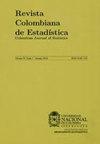基于线性化和u统计方法的基尼系数估计的比较研究
Q3 Mathematics
引用次数: 9
摘要
在本文中,我们考虑了两种著名的基尼指数分析方法,即u统计和对某些收入分布的线性化。此外,我们还评估了两种不同方法所提出的估计量的一些性质。此外,我们比较了两种方法与重采样技术在近似基尼指数的一些属性。仿真研究表明,与基于u统计量的基尼估计器相比,线性化方法执行得“很好”。对真实数据的简短研究支持了我们的发现。本文章由计算机程序翻译,如有差异,请以英文原文为准。
A Comparative Study of the Gini Coefficient Estimators Based on the Linearization and U-Statistics Methods
In this paper, we consider two well-known methods for analysis of the Gini index, which are U-statistics and linearization for some income distributions. In addition, we evaluate two different methods for some properties of their proposed estimators. Also, we compare two methods with resampling techniques in approximating some properties of the Gini index. A simulation study shows that the linearization method performs 'well' compared to the Gini estimator based on U-statistics. A brief study on real data supports our findings.
求助全文
通过发布文献求助,成功后即可免费获取论文全文。
去求助
来源期刊

Revista Colombiana De Estadistica
STATISTICS & PROBABILITY-
CiteScore
1.20
自引率
0.00%
发文量
0
审稿时长
>12 weeks
期刊介绍:
The Colombian Journal of Statistics publishes original articles of theoretical, methodological and educational kind in any branch of Statistics. Purely theoretical papers should include illustration of the techniques presented with real data or at least simulation experiments in order to verify the usefulness of the contents presented. Informative articles of high quality methodologies or statistical techniques applied in different fields of knowledge are also considered. Only articles in English language are considered for publication.
The Editorial Committee assumes that the works submitted for evaluation
have not been previously published and are not being given simultaneously for publication elsewhere, and will not be without prior consent of the Committee, unless, as a result of the assessment, decides not publish in the journal. It is further assumed that when the authors deliver a document for publication in the Colombian Journal of Statistics, they know the above conditions and agree with them.
 求助内容:
求助内容: 应助结果提醒方式:
应助结果提醒方式:


